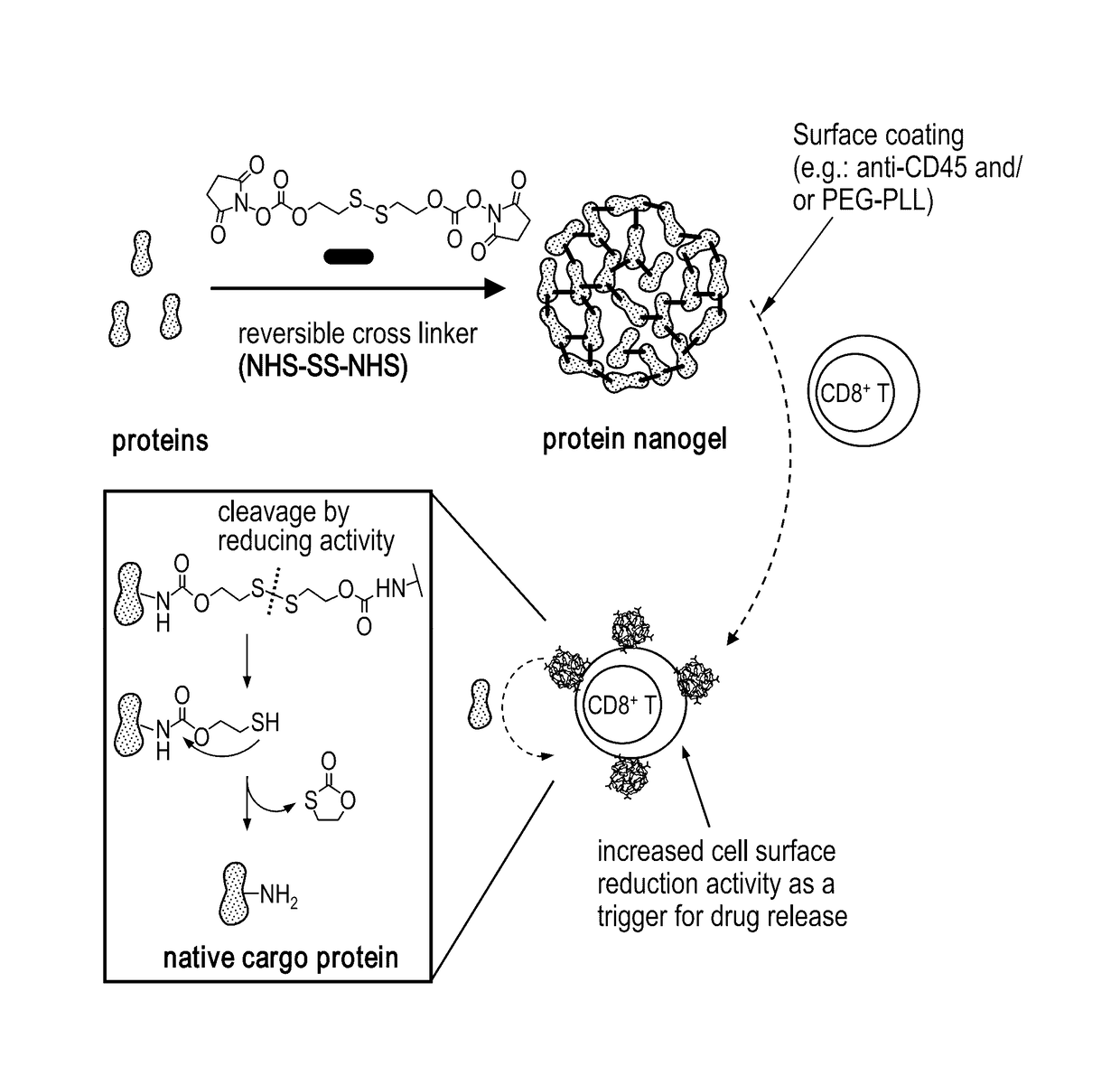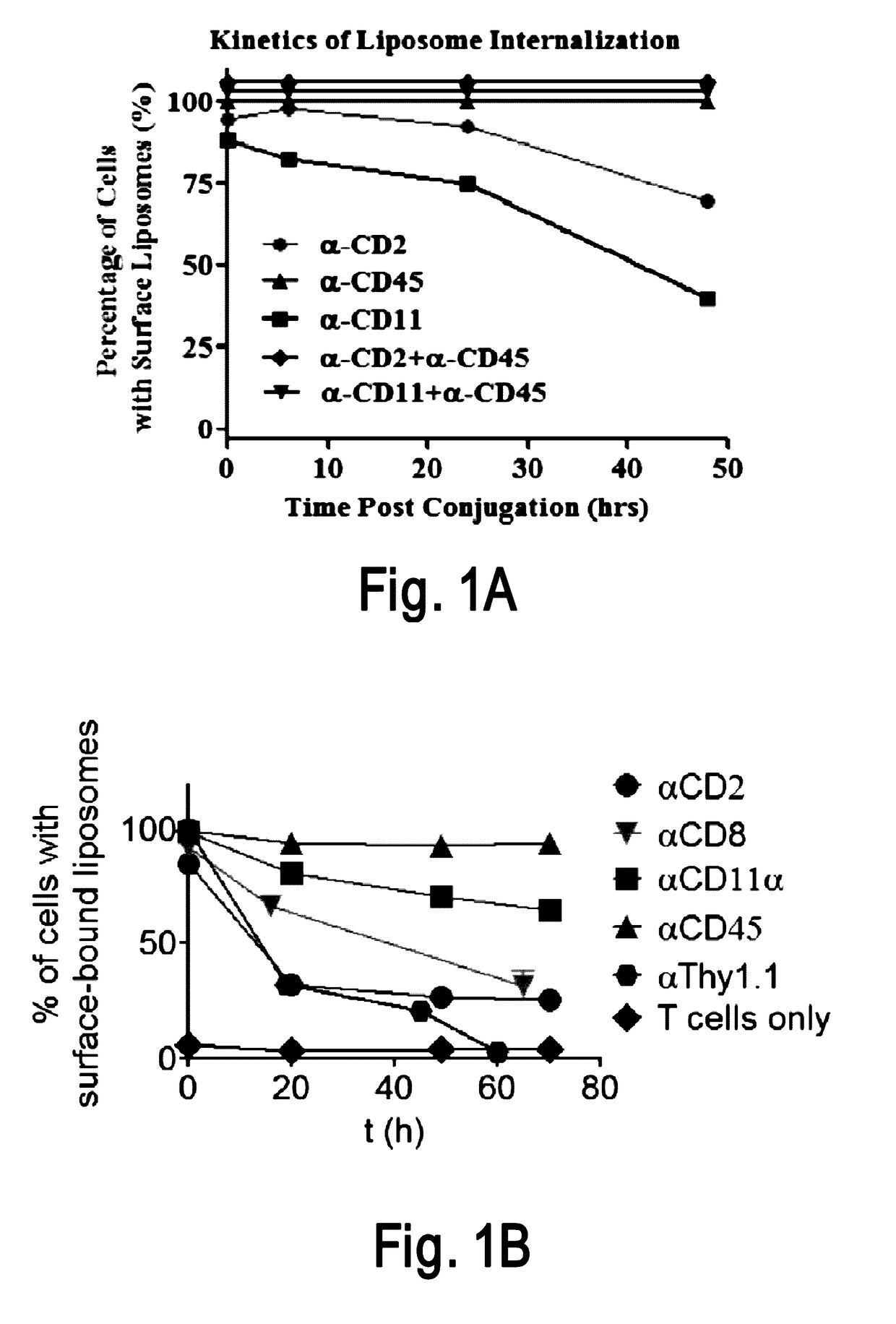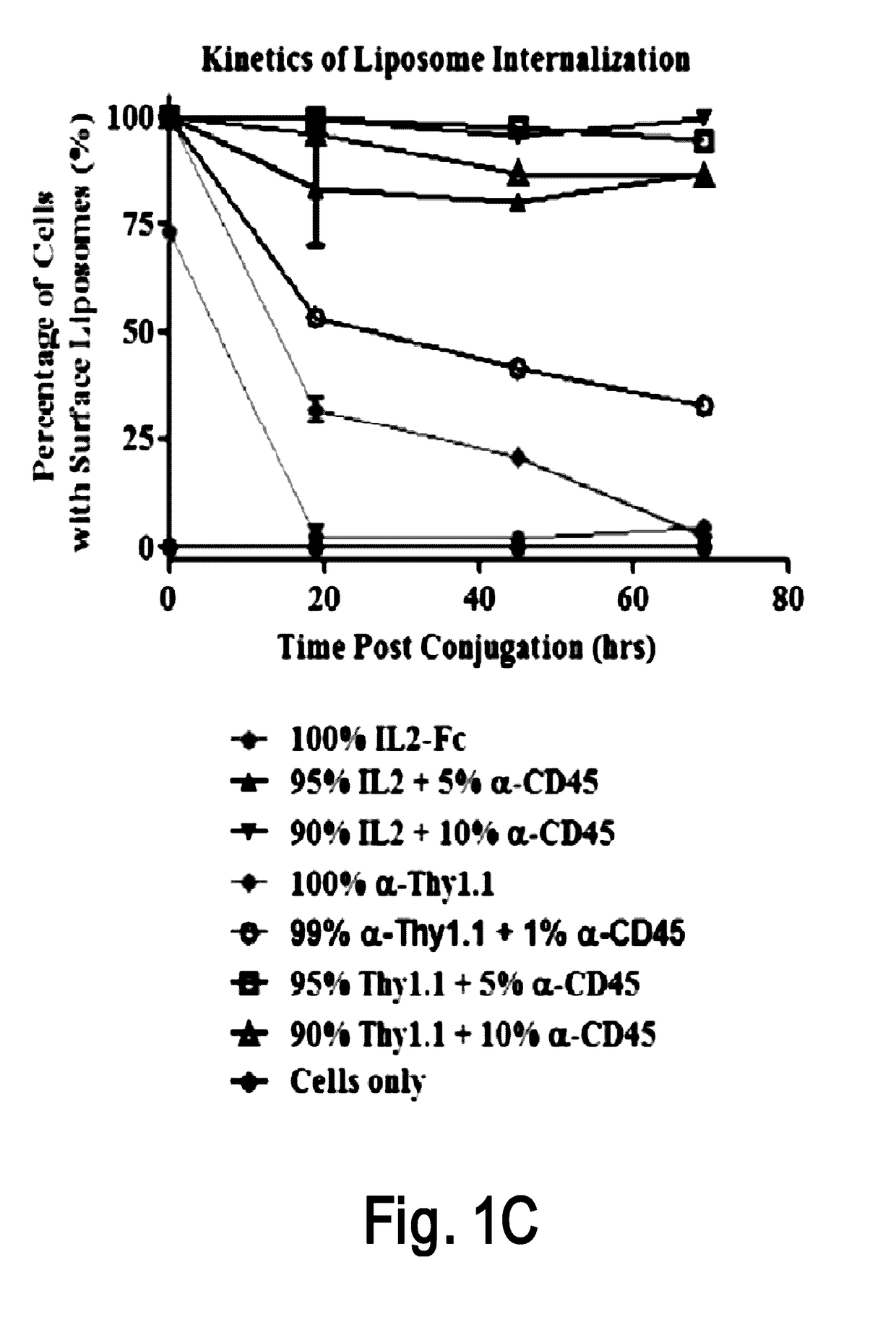Cell surface coupling of nanoparticles
- Summary
- Abstract
- Description
- Claims
- Application Information
AI Technical Summary
Benefits of technology
Problems solved by technology
Method used
Image
Examples
example 1
Identification of CD45 as Stable Cell Surface Anchor for Maximizing Liposome Loading
[0315]An interbilayer-crosslinked multilamellar vesicle (ICMV) (Nature Mater. 2011, 10, 243-251) is one type of particle that can remain on the cell surface (e.g., T cell surface) for more than four days. A candidate pool of slowly-internalizing receptors was obtained by mass spectrometry analysis of the total surface proteins ICMVs bound most abundantly. The screening for the main contributors for ICMVs' long surface retention was conducted by using liposomes which are surface coupled with an antibody against top candidate surface receptors such as CD2, CD11 and CD45. Antibody-conjugated liposomes coupled to carrier cells.
[0316]Liposome Synthesis
[0317]Antibody-conjugated liposomes were produced by hydrating dried high-TM phospholipid films containing 2.5% PEG-maleimide and 1% biotin head groups. Specifically, vacuum dried lipid films composed of 1,2-distearoyl-sn-glycero-3-phospho ethanolamine-N-[ma...
example 2
Preparation and Surface Modification of Cytokine Nanogels for Efficient and Stable T Cell Surface Coupling
[0324]Cytokine nanogels (NGs) were prepared as described in International Publication Number WO 2015 / 048498 A2, published on 2 Apr. 2015, incorporated by reference herein. Further modifications we made to the cytokine nanogels as described herein. Generally, the cytokines were chemically crosslinked with a reversible linker (NHS—SS—NHS) to form crosslinked nano-structure of proteins, named protein nanogel (NG, FIG. 2). After completion the crosslinking reaction of cytokines, anti-CD45 antibody and / or polycations are added in situ for modifying the NG surface (FIG. 2). Following synthesis, the nanogels were characterized and coupled to carrier cells as described further below.
[0325]Synthesis of Nanogels
[0326]Synthesis of NHS—SS—NHS Crosslinker:
[0327]In a 125 mL round-bottom flask, 2-hydroxyethyl disulfide (1.54 g, 10 mmol) was dissolved in tetrahydrofuran (THF, 30 mL, anhydrous) ...
example 3
Cytokine Nanogels Promote Effector T Cell Expansion In Vitro and In Vivo
[0345]In vitro proliferation assays of T cells were conducted to determine the effect of anti-CD45 on T cell expansion. Naïve pmel-1 CD8+ T-cells were labelled with carboxyfluorescein succinimidyl ester (CFSE) and then conjugated with aCD45 / IL-15Sa-NG, IL-15Sa-NG, or aCD45 / IL-15Sa-NG (non-deg.) respectively as described above. After removing unbound NGs, T-cells were resuspended in RPMI with 10% FCS (5.0×105 / mL) and added to anti-CD3 / CD28 coated beads at a 1:2 bead:T-cell ratio. Free IL-15Sa was added to the cells in control groups at equivalent dose (pulsed or continuous). Cell media were replaced every 3 days and free IL-15Sa was replenished in the continuous treatment group. At selected time points, replicates of T-cells were added with counting beads and washed with flow cytometry buffer (PBS with 2% FCS) followed by aqua live / dead staining. Cells were stained for surface markers (CD8, CD122) with antibodies...
PUM
| Property | Measurement | Unit |
|---|---|---|
| Size | aaaaa | aaaaa |
| Size | aaaaa | aaaaa |
| Size | aaaaa | aaaaa |
Abstract
Description
Claims
Application Information
 Login to View More
Login to View More - R&D
- Intellectual Property
- Life Sciences
- Materials
- Tech Scout
- Unparalleled Data Quality
- Higher Quality Content
- 60% Fewer Hallucinations
Browse by: Latest US Patents, China's latest patents, Technical Efficacy Thesaurus, Application Domain, Technology Topic, Popular Technical Reports.
© 2025 PatSnap. All rights reserved.Legal|Privacy policy|Modern Slavery Act Transparency Statement|Sitemap|About US| Contact US: help@patsnap.com



